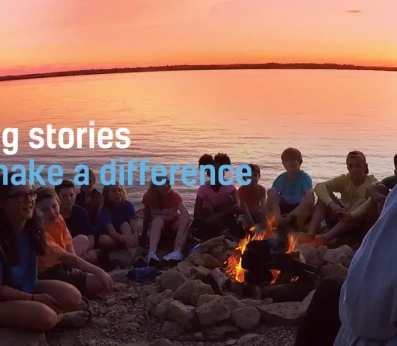In the ever-evolving landscape of digital marketing, video storytelling has emerged as a pivotal player. This transformation from traditional text-based narratives to dynamic video content marks a significant shift in how businesses communicate with their audience. The power of video lies in its ability to captivate, engage, and convey complex messages succinctly and emotively, making it a preferred medium for brands seeking to forge stronger connections with their audience.
Impact on SEO and Online Presence
One of the most profound impacts of video storytelling is its influence on Search Engine Optimization (SEO) and online visibility. Search engines like Google prioritize content that enhances user experience. Videos, known for their high engagement rates, are increasingly favored in search engine algorithms. They encourage longer site visits, reduce bounce rates, and often lead to higher click-through rates—all factors that positively affect a website’s search ranking.
Furthermore, videos can be optimized with keywords, titles, and descriptions, making them powerful tools for targeted SEO strategies. Platforms like YouTube, the second-largest search engine after Google, provide businesses with an avenue to reach a global audience, optimize for search queries, and improve their online presence.
The Contrast Between Adoption and Resistance
The business world exhibits a stark contrast between companies that have embraced video storytelling and those that have yet to adopt this trend. Businesses leveraging video storytelling enjoy increased engagement, higher brand recall, and stronger emotional connections with their audience. They use videos for various purposes—from product demonstrations and customer testimonials to behind-the-scenes glimpses and corporate storytelling.
On the other hand, companies that resist this digital transformation risk falling behind. In a world where consumer attention is a coveted commodity, failing to engage audiences with compelling video content can lead to reduced visibility, lower engagement, and missed opportunities to connect with a digitally savvy audience.
YouTube vs. Traditional Websites
The rise of platforms like YouTube over traditional websites is a testament to changing consumer preferences. YouTube, with its vast user base, provides an unparalleled platform for video distribution, audience engagement, and brand visibility. It’s not just a platform for content; it’s a community where viewers can interact, share, and connect with content creators and brands.
This preference shift underscores the importance of integrating YouTube into business strategies. Unlike traditional websites, which often serve as static information repositories, YouTube channels offer dynamic, interactive, and continuously updated content. They allow businesses to build a more personal and engaging narrative, fostering a sense of community and loyalty among viewers.
Integrating YouTube into Business Strategy
Integrating YouTube into a broader digital marketing strategy is not just about uploading videos; it’s about creating a channel that reflects the brand’s identity and values. Successful YouTube strategies involve consistent content creation, engagement with viewers through comments and community posts, and cross-promotion with other social media platforms.
Moreover, YouTube analytics provide valuable insights into viewer preferences, engagement patterns, and demographics, enabling businesses to refine their content strategy and better target their audience.
Technological Advancements in Video Storytelling
The evolution of video storytelling is also fueled by technological advancements. High-quality video production, once the domain of professionals, is now more accessible thanks to affordable, high-resolution cameras and advanced editing software. Additionally, emerging technologies like virtual reality (VR) and augmented reality (AR) are opening new frontiers in immersive storytelling, allowing brands to offer unique, interactive experiences to their audience.
The Risks of Ignoring Video Storytelling Trends
The risks for businesses that ignore the shift toward video storytelling are significant. In a digital landscape dominated by video content, companies that fail to adapt risk losing relevance and visibility. They miss out on the opportunity to engage with a broader audience, build brand loyalty, and stay competitive in a rapidly evolving market.
Future Trends in Video Storytelling
Looking ahead, the future of video storytelling is poised to become even more innovative and integrated. We can expect to see a greater emphasis on personalized video content, where AI and machine learning algorithms tailor videos to individual viewer preferences and behaviors. Interactive videos, offering viewers the ability to choose their narrative paths, are likely to gain popularity, enhancing user engagement and experience.
The integration of video content with other emerging technologies, such as AI-driven chatbots and IoT devices, will create more interactive and immersive experiences for consumers. Additionally, the use of data analytics in video marketing will become more sophisticated, allowing for more targeted and effective storytelling strategies.
Conclusion: Embracing the Power of Video Storytelling
In conclusion, the rise of video storytelling marks a pivotal shift in the way businesses communicate and engage with their audience. As we move forward, the integration of advanced technologies and platforms like YouTube will continue to shape the landscape of digital marketing. Companies that embrace this trend and innovate in their storytelling approaches will find themselves at the forefront of a more connected, engaged, and visually driven world. The power of video storytelling lies in its.



